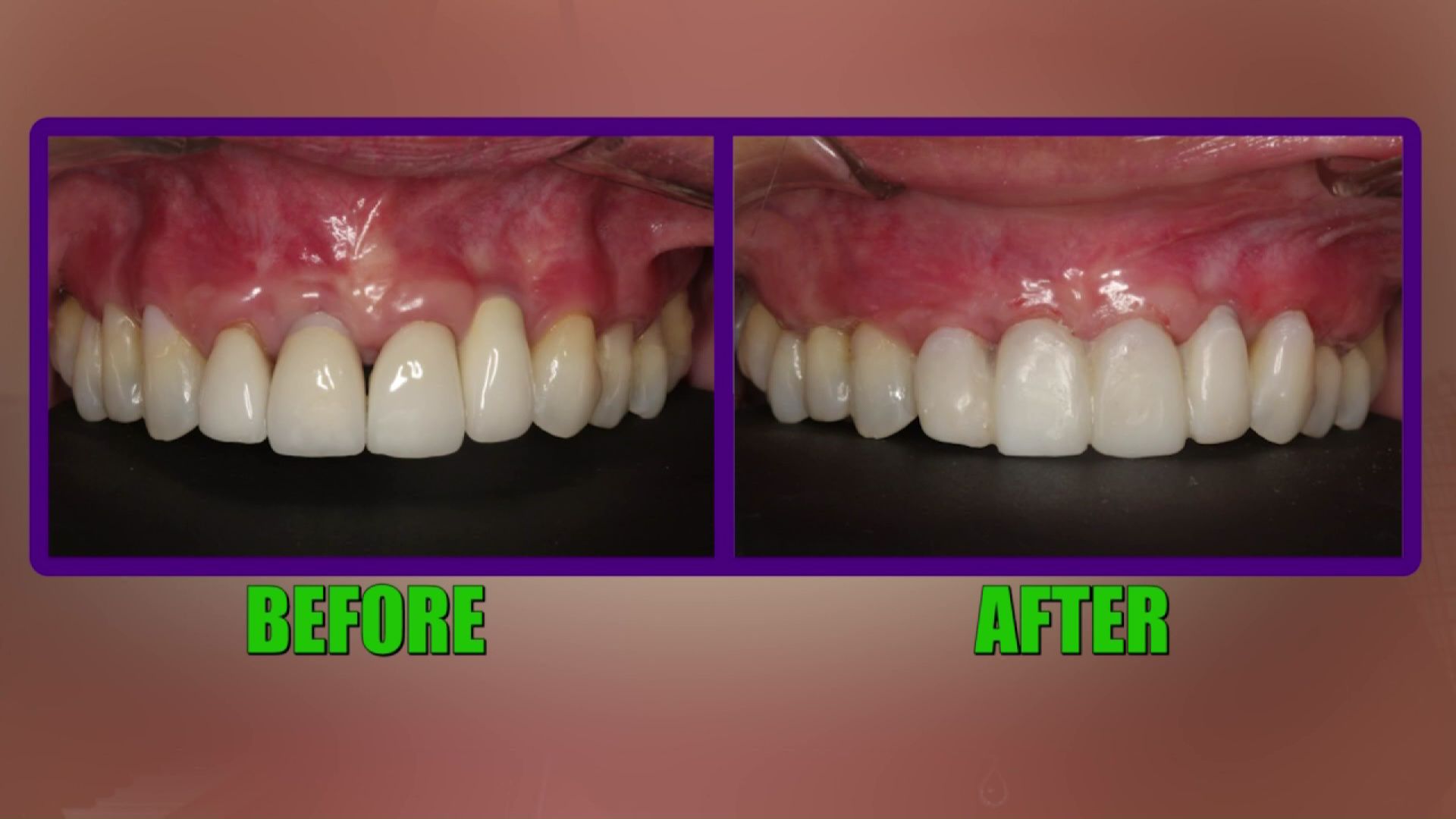Tooth Root Exposure: Fix Gum Recession Naturally

Gum recession, a common dental issue, occurs when the gum tissue surrounding the teeth pulls back, exposing the tooth roots. This can lead to sensitivity, decay, and even tooth loss if left untreated. While gum recession is often associated with aging, it can affect individuals of all ages, particularly those with poor oral hygiene, genetics, or certain medical conditions. The good news is that tooth root exposure can be addressed naturally, without resorting to surgical procedures. In this comprehensive guide, we will explore the causes, symptoms, and natural remedies for fixing gum recession and promoting healthy gums.
Understanding Gum Recession
Gum recession is a gradual process that can be caused by a combination of factors, including:
- Poor Oral Hygiene: Inadequate brushing and flossing can lead to plaque buildup, which can cause inflammation and gum recession.
- Genetics: Some individuals may be more prone to gum recession due to their genetic makeup.
- Hormonal Changes: Fluctuations in hormone levels during pregnancy, menopause, or puberty can affect gum health.
- Smoking and Tobacco Use: Tobacco consumption can reduce blood flow to the gums, making them more susceptible to recession.
- Grinding and Clenching: Excessive force on the teeth can cause gum recession, particularly if the grinding and clenching occur at night.
Symptoms of Gum Recession
Recognizing the symptoms of gum recession is crucial for early intervention. Some common signs include:
- Tooth Sensitivity: Exposed tooth roots can cause sensitivity to hot and cold temperatures, sweets, and sour foods.
- Visible Roots: The tooth roots may become visible, giving the teeth a longer appearance.
- Gum Discoloration: The gums may appear red, swollen, or inflamed.
- Bad Breath: Gum recession can lead to the formation of pockets between the teeth and gums, trapping bacteria and causing bad breath.
Natural Remedies for Gum Recession
While surgical procedures can be effective in treating gum recession, there are several natural remedies that can help promote healthy gums and reduce tooth root exposure. Some of these remedies include:
1. Oil Pulling
Oil pulling, an ancient Ayurvedic practice, involves swishing oil (coconut, sesame, or sunflower) in the mouth to reduce bacteria and inflammation. This can help prevent gum recession and promote healthy gums.
2. Desensitizing Toothpaste
Using a desensitizing toothpaste can help alleviate tooth sensitivity caused by gum recession. Look for toothpaste containing potassium nitrate or strontium chloride.
3. Salt Water Rinse
Rinsing with warm salt water can help reduce inflammation and kill bacteria that can contribute to gum recession.
4. Aloe Vera Gel
Aloe vera gel has anti-inflammatory and soothing properties that can help calm irritated gums and promote healing.
5. Vitamin C
Vitamin C is essential for collagen production, which can help strengthen gum tissue. Increase your intake of vitamin C-rich foods, such as citrus fruits, berries, and leafy greens.
Prevention is Key
Preventing gum recession is always better than treating it. To maintain healthy gums and prevent tooth root exposure, follow these guidelines:
- Practice Good Oral Hygiene: Brush your teeth at least twice a day and floss once a day to remove plaque and bacteria.
- Visit Your Dentist Regularly: Regular dental checkups can help identify early signs of gum recession and prevent further damage.
- Avoid Smoking and Tobacco Use: Quit smoking and tobacco use to reduce the risk of gum recession.
- Eat a Balanced Diet: A diet rich in fruits, vegetables, and whole grains can provide essential nutrients for healthy gums.
Advanced Techniques for Gum Recession
In addition to the natural remedies mentioned above, there are several advanced techniques that can help treat gum recession. Some of these techniques include:
- Gum Grafting: A surgical procedure that involves grafting healthy gum tissue to the affected area.
- Pinhole Surgical Technique: A minimally invasive procedure that involves making a small hole in the gum tissue to insert a special tool that helps to reposition the gum tissue.
- Laser Therapy: A non-invasive treatment that uses a laser to stimulate blood flow and promote healing in the affected area.
Conclusion
Tooth root exposure caused by gum recession can be a concerning issue, but it can be addressed naturally with the right approach. By understanding the causes and symptoms of gum recession, incorporating natural remedies into your daily routine, and practicing good oral hygiene, you can promote healthy gums and reduce the risk of tooth root exposure. Remember, prevention is key, and regular dental checkups can help identify early signs of gum recession and prevent further damage.
What are the common causes of gum recession?
+Gum recession can be caused by a combination of factors, including poor oral hygiene, genetics, hormonal changes, smoking and tobacco use, and grinding and clenching.
How can I prevent gum recession?
+Preventing gum recession involves practicing good oral hygiene, visiting your dentist regularly, avoiding smoking and tobacco use, and eating a balanced diet.
What are the symptoms of gum recession?
+The symptoms of gum recession include tooth sensitivity, visible roots, gum discoloration, and bad breath.
Can gum recession be treated naturally?
+Yes, gum recession can be treated naturally with remedies such as oil pulling, desensitizing toothpaste, salt water rinse, aloe vera gel, and vitamin C.
What are the advanced techniques for treating gum recession?
+Advanced techniques for treating gum recession include gum grafting, pinhole surgical technique, and laser therapy.